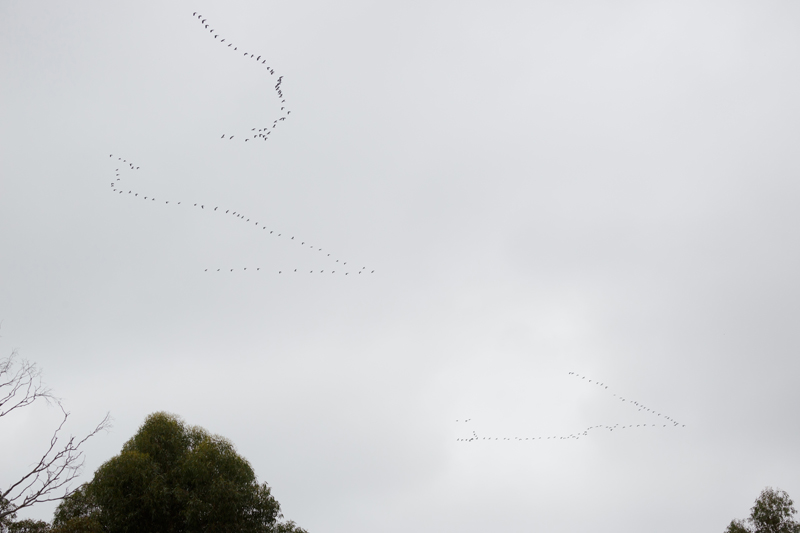Greetings from Yellingbo.
It was a cool, yet still morning as we arrived in the car park for the August Bird Walk at Yellingbo Nature Conservation Area. Eastern Whipbird was calling close to the car park at the Education Centre and there were many small birds flitting through the upper canopy of the nearby eucalypts. Binoculars were pointed skywards.
With the promise of light rain, the intrepid and hopeful birdos took the northern track away from the parked cars. There were the usual suspects along the way. Australian Shelduck was a welcome sight at the dam along with Australasian Grebe. Jacky Winter posed for a photo, just before spying a tidbit on the ground and flying to it as a robin does. There was an odd light shower during the morning but nothing to dampen our spirits.
Calls were heard through the bush of White-throated Treecreeper (female – look for the orange spot at the side of her throat – seen pictured*) along with many honeyeaters that are endemic to the area. Striated Pardalote has come down from the north once again and was often heard calling, as was its Spotted cousin.
Another often-sighted inhabitant of the area is Eastern Yellow Robin (pictured below*).
Amongst other birds that were recorded on the day were Bassian Thrush, Wedge-tailed Eagle, Straw-necked Ibis, Australian Raven and not the least, Golden Whistler.
Always a welcome addition to our bird list is Superb Fairy Wren which often visits as we sit for lunch close to the Education Centre. It hops around the perimeter of the group in small numbers to delight onlookers.
The next bird walk at Yellingbo will be on Sunday 3 September 2023. Entrance via Shield Road from Macclesfield Road. Gate opens at 9:00 and walk begins at 9:30 am. Gate reopens at about 2:30 pm after bird call and short afternoon walk. All bird watchers welcome. Please bring lunch and a folding chair. I’ll look forward to meeting you there.
Maryanne Anderson
Yellingbo Coordinator
easternspinebill@yahoo.com.au
* All photos in this blog were generously supplied by Clancy Benson.





















































